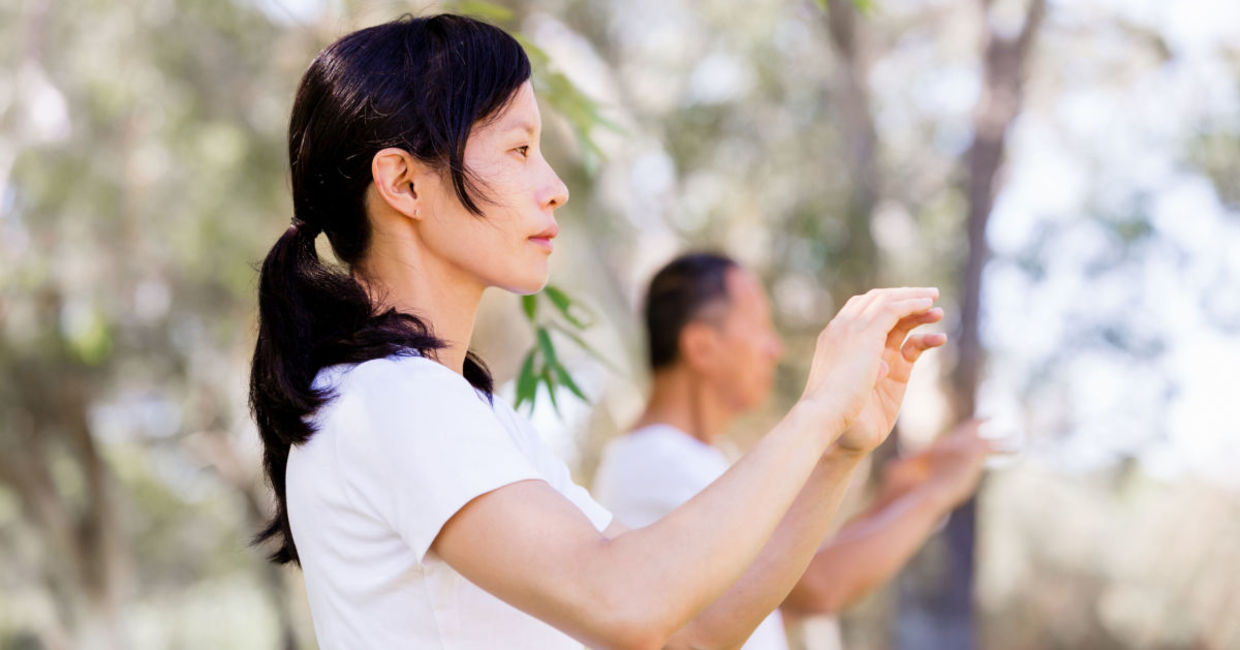
(Sergey Nivens / Shutterstock.com)
The ancient mindful Chinese martial art, tai chi blends gentle movements, deep breathing, and meditation. Often referred to as meditation in motion, tai chi harmonizes the mind and body. It is a graceful form of exercise in which each posture seamlessly transitions to the next, maintaining continuous motion.
Tai chi presents a powerful tool for promoting balance, flexibility, and overall well-being. Many different styles exist within it, each focusing on different principles and techniques, according to the Mayo Clinic. With this diversity, tai chi offers over 100 possible movements and positions. Here are tai chi poses that will connect you to each of the five leading elements:
Fire Element - Sunrise Meditation
Embrace the energizing qualities of the fire element with the empowering sunrise meditation pose. According to the Universal Energy Arts Academy, this posture ignites your inner vitality, promoting a sense of warmth and enthusiasm.
Begin by standing with your feet shoulder-width apart, arms relaxed by your sides. Slowly raise your arms, palms facing upward, and inhale deeply. Visualize the radiant energy of the rising sun filling your body with vitality and positivity. Hold the pose for a few breaths, feeling the warmth and light surrounding you. Exhale as you lower your arms back to the starting position. Repeat this movement several times to awaken your inner fire.
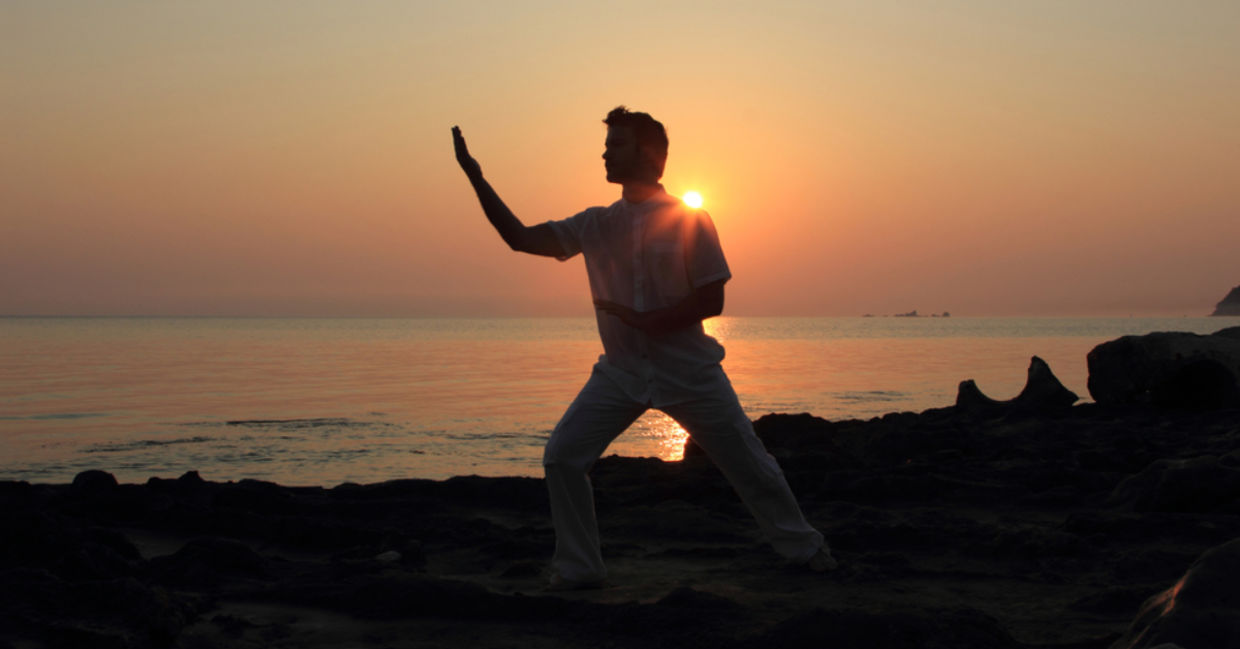
(Netfalls Remy Musser / Shutterstock.com)
Earth Element - Root Pose
Engage with the earth element through the root pose. This pose goes beyond simply standing and ignites a deep connection to the earth beneath you. Practicing the root pose involves managing your center of gravity with the earth's core, ensuring centered and balanced movement, according to a blog on the Fire Mountain School website. It requires clarity, focus, awareness, and purpose.
To begin, align your body in an upright posture. Release tension in your shoulders and arms by allowing them to hang naturally. Activate your core and gently draw your belly toward your spine while engaging your pelvic floor muscles. With a straight back, gradually lower your hips and slightly bend Your knees.
Now it’s time to ground through the feet. With your knees flexed, sink through the eight points of the foot and lower the hips. Then, gradually push down and extend through the same eight points as if starting to stand up, straightening the legs slightly. Once you are engaged, practice standing on one leg while maintaining alignment and stability.
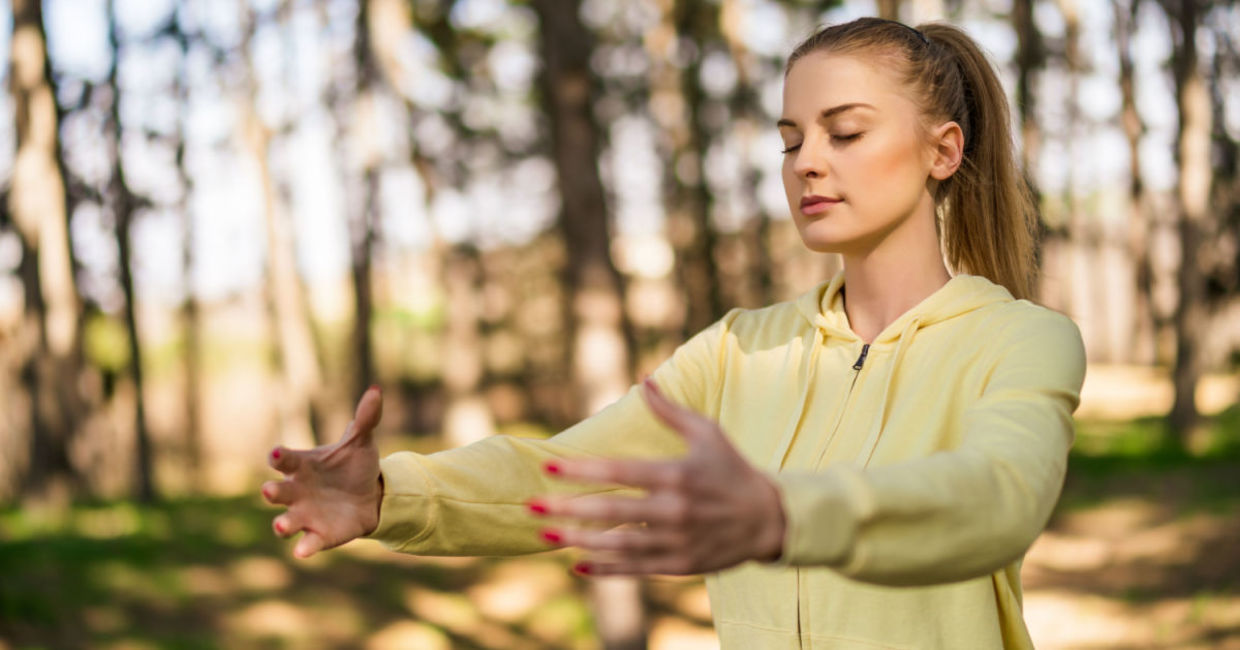
(InesBazdar / Shutterstock.com)
Water Element - Flowing Wave
Dive into the fluidity and adaptability of the water element with the flowing wave pose. This graceful movement embodies the natural flow of water, enhancing your flexibility and promoting a sense of tranquility, according to a blog on the Art of Tai Chi.
Arrive at a standing position with your feet shoulder-width apart. Emerge into a flowing, wave-like motion with your arms, creating gentle circles in front of your body. Visualize the fluidity of water as you synchronize your movements with deep, rhythmic breathing. Allow any tension or stress to melt away as you embrace the serenity of this pose.
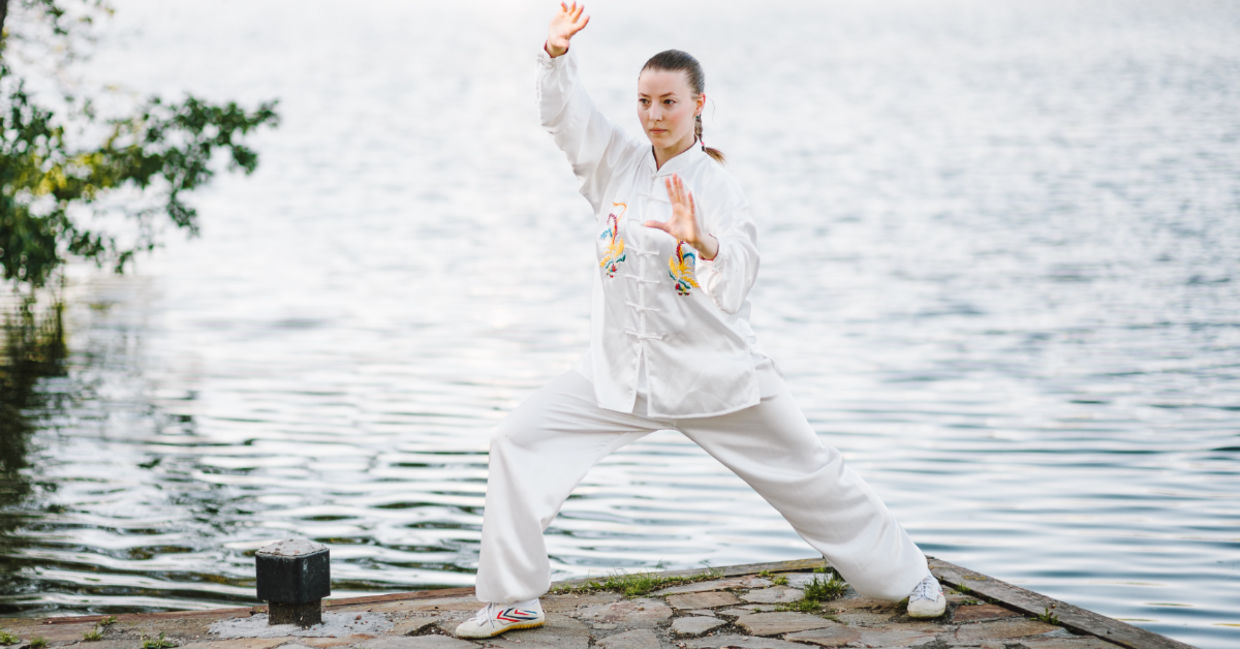
(matsiukpavel / Shutterstock.com)
Metal Element - Pushing Hands
The metal element embodies strength, clarity, and precision, according to a blog on Feng Shui World. As a partner exercise, pushing hands poses develop these qualities while encouraging a sense of harmony and cooperation.
To begin the push pose, stand facing your partner, arms extended and gently interlocked at the wrists, according to a blog on the Practical Tai Chi Denmark website. Maintain a relaxed and stable posture as you engage in gentle pushing and yielding movements, practicing sensitivity and responsiveness. Focus on maintaining a calm and clear mind, observing and adapting to your partner's actions. This exercise cultivates physical strength, mental understanding, and the ability to adapt to changing situations.
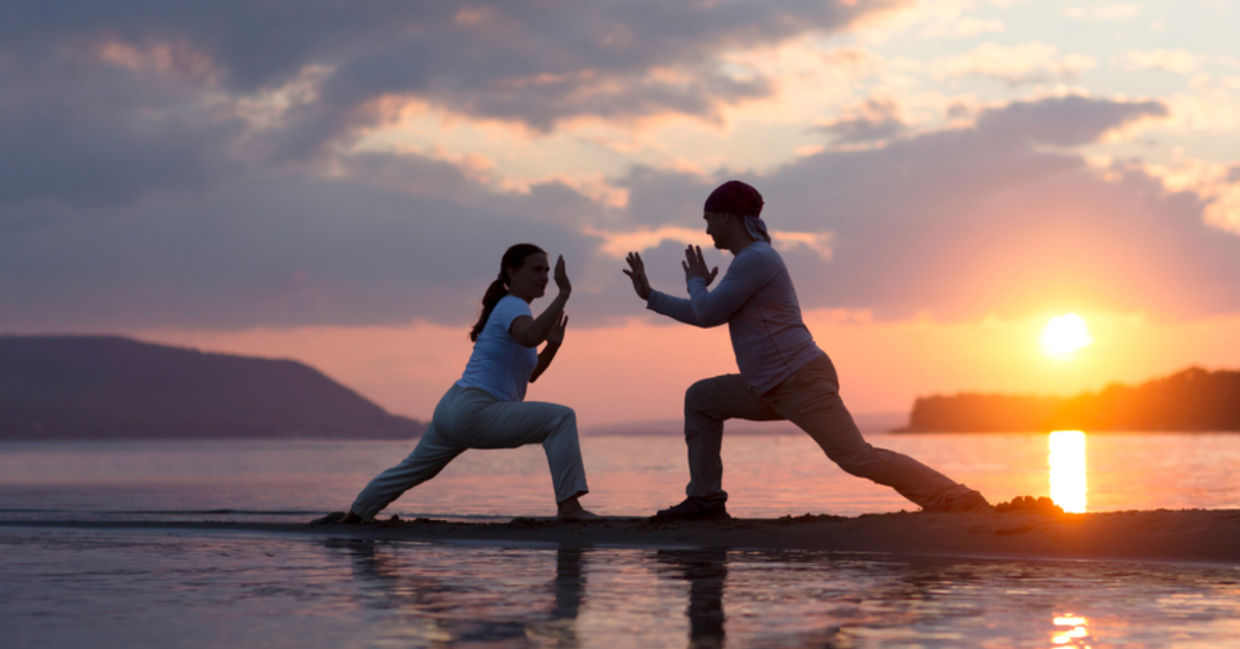
(Ulza / Shutterstock.com)
Wood Element - Swaying Branches
Embody the vitality and growth of the wood element with the dynamic swaying branches pose. This posture stimulates the flow of energy along the body's meridian pathways, fostering flexibility, expansion, and renewal, according to the Movement in Mind wellness program.
Stand with your feet shoulder-width apart and gently sway your body from side to side. Allow your arms to flow harmoniously with the movement. Visualize yourself as a tree, bending with the wind while maintaining strength and resilience.
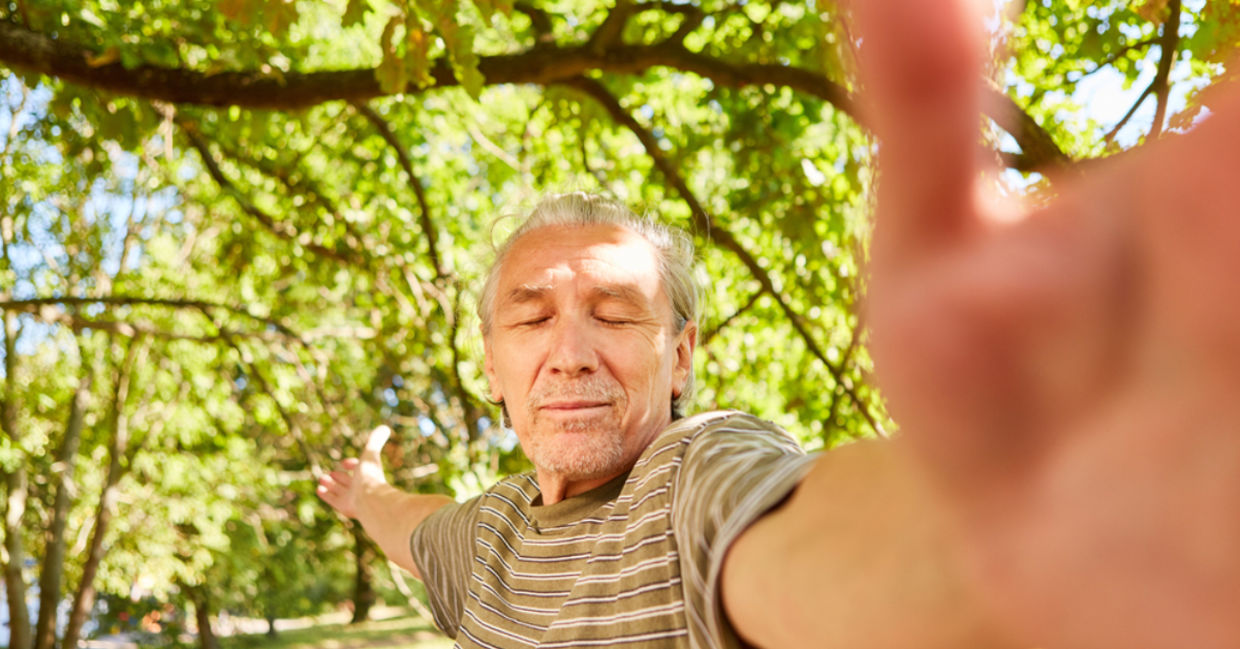
(Robert Kneschke / Shutterstock.com)







